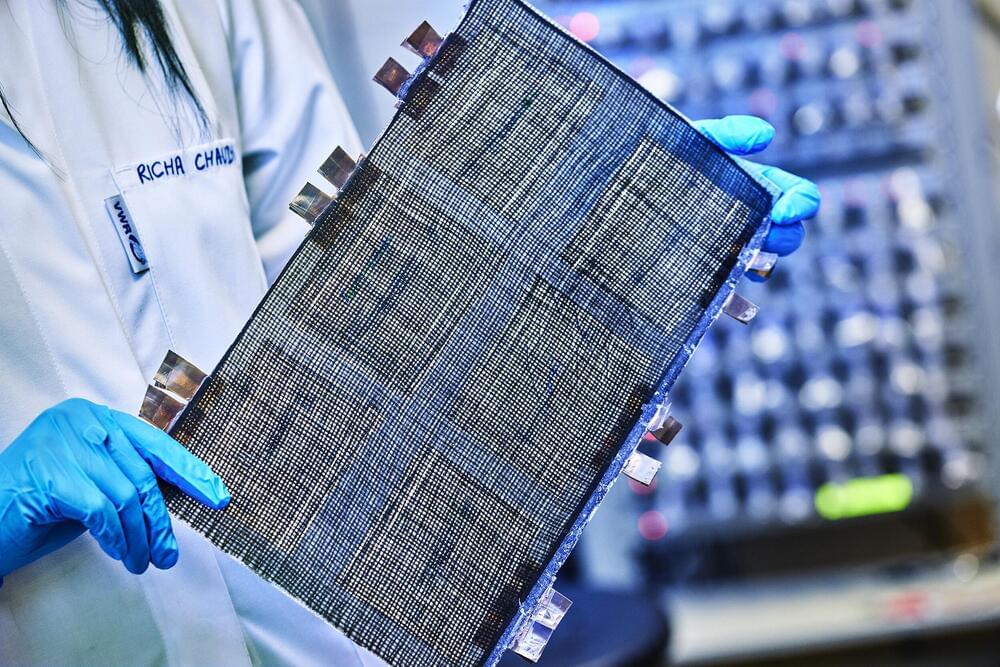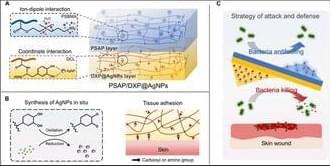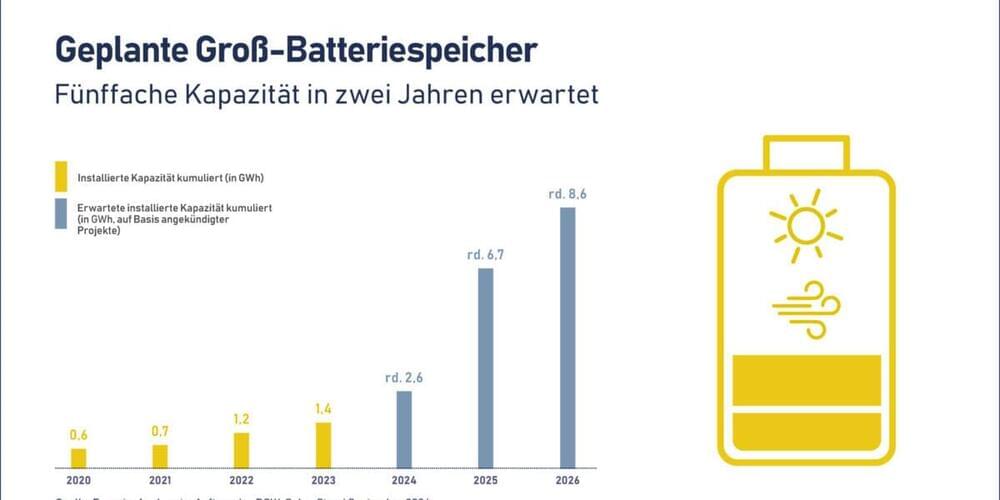What would you say if someone told you that skin cancer could be cured by using a bar of soap?
Ethiopia-born Heman Bekele is on TIME’s latest cover as the 2024 Kid of the Year.


When cars, planes, ships or computers are built from a material that functions as both a battery and a load-bearing structure, the weight and energy consumption are radically reduced. A research group at Chalmers University of Technology in Sweden is now presenting a world-leading advance in so-called massless energy storage — a structural battery that could halve the weight of a laptop, make the mobile phone as thin as a credit card or increase the driving range of an electric car by up to 70% on a single charge.
“We have succeeded in creating a battery made of carbon fiber composite that is as stiff as aluminum and energy-dense enough to be used commercially. Just like a human skeleton, the battery has several functions at the same time,” says Chalmers researcher Richa Chaudhary, who is the first author of an article recently published in Advanced Materials.
Research on structural batteries has been going on for many years at Chalmers, and in some stages also together with researchers at the KTH Royal Institute of Technology in Stockholm, Sweden. When Professor Leif Asp and colleagues published their first results in 2018 on how stiff, strong carbon fibers could store electrical energy chemically, the advance attracted massive attention.


In most vertebrates, a pattern of chemical marks on the genome is a reliable indicator of age, but in axolotls this clock seems to stop after the first four years of life.

I have my own introduction quantum mechanics course that you can check out on Brilliant! First 30 days are free and 20% off the annual premium subscription when you use our link ➜ https://brilliant.org/sabine.
Physicists are obsessed with black holes, but we still don’t know what’s going on inside of them. One idea is that black holes do not truly exist, but instead they are big quantum objects that have been called fuzzballs or frozen stars. This idea has a big problem. Let’s take a look.
This video comes with a quiz which you can take here: https://quizwithit.com/start_thequiz/.…
Paper: https://journals.aps.org/prd/abstract…
🤓 Check out my new quiz app ➜ http://quizwithit.com/
💌 Support me on Donorbox ➜ https://donorbox.org/swtg.
📝 Transcripts and written news on Substack ➜ https://sciencewtg.substack.com/
👉 Transcript with links to references on Patreon ➜ / sabine.
📩 Free weekly science newsletter ➜ https://sabinehossenfelder.com/newsle…
👂 Audio only podcast ➜ https://open.spotify.com/show/0MkNfXl…
🔗 Join this channel to get access to perks ➜
/ @sabinehossenfelder.
🖼️ On instagram ➜ / sciencewtg.
#science #sciencenews #physics #space

All physical observations are made relative to a reference frame, which is a system in its own right. If the system of interest admits a group symmetry, the reference frame observing it must transform commensurately under the group to ensure the covariance of the combined system. We point out that the crossed product is a way to realize quantum reference frames from the bottom-up; adjoining a quantum reference frame and imposing constraints generates a crossed product algebra. We provide a top-down specification of crossed product algebras and show that one cannot obtain inequivalent quantum reference frames using this approach. As a remedy, we define an abstract algebra associated to the system and symmetry group built out of relational crossed product algebras associated with different choices of quantum reference frames.

Recently Danielson, Satishchandran, and Wald (DSW) have shown that quantum superpositions held outside of Killing horizons will decohere at a steady rate. This occurs because of the inevitable radiation of soft photons (gravitons), which imprint a electromagnetic (gravitational) “which-path’’ memory onto the horizon. Rather than appealing to this global description, an experimenter ought to also have a local description for the cause of decoherence. One might intuitively guess that this is just the bombardment of Hawking/Unruh radiation on the system, however simple calculations challenge this idea—the same superposition held in a finite temperature inertial laboratory does not decohere at the DSW rate. In this work we provide a local description of the decoherence by mapping the DSW setup onto a worldline-localized model resembling an Unruh-DeWitt particle detector.
When is an empty tube not an empty tube? When it’s a ramjet that uses rotating detonation technology to propel aircraft at hypersonic speeds. A case in point is Venus Aerospace’s new Venus Detonation Ramjet 2000 lb Thrust Engine (VDR2).
One of the biggest hurdles that need to be cleared in making hypersonic flight practical is building engines that are capable of sustained thrust.
Currently, hypersonic systems are mainly based on glide bodies that are boosted to high speed and altitude by rockets and then accelerate to over Mach 5 by gliding back to lower altitudes. However, if you want to build airliners that can fly from San Francisco to Tokyo in one hour, you need something more like a jet engine.
One of the key features of the eVinci microreactor is its impressive versatility. It will have the capability to generate five megawatts of electricity, produce over 13 megawatts of high-temperature heat, or operate in combined heat and power mode, according to the Saskatchewan Research Council.
To put this in perspective, the Nuclear Regulatory Commission reported in 2012 that a single megawatt of capacity from a conventional power plant can meet the energy needs of 400 to 900 homes in a year.
Westinghouse views the eVinci microreactor as a groundbreaking technology that holds great promise for future energy requirements.